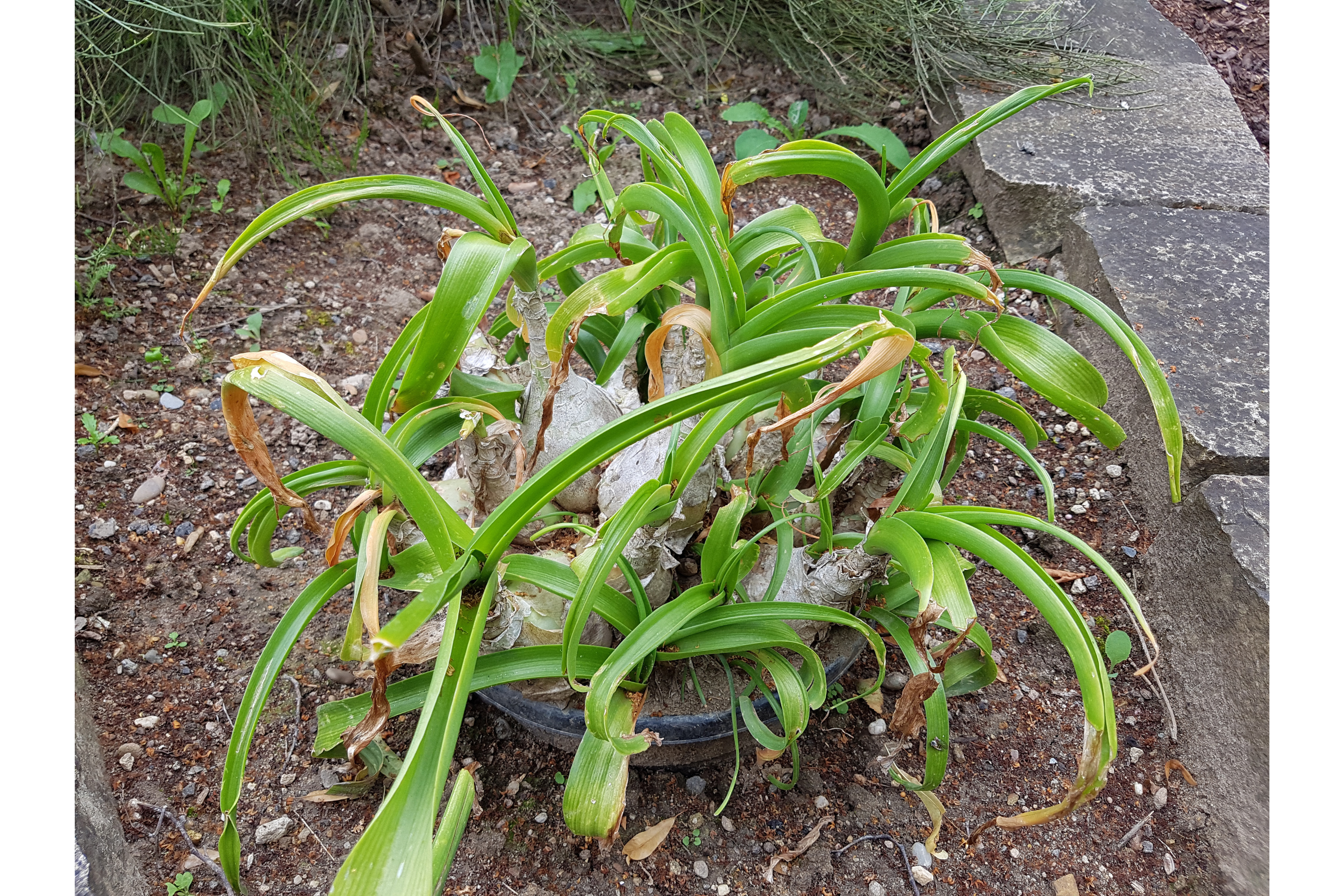Red squill
(Drimia maritima)

Description
Drimia maritima (syn. Urginea maritima) is a species of flowering plant in the family Asparagaceae, subfamily Scilloideae (formerly the family Hyacinthaceae). This species is known by several common names, including squill, sea squill, sea onion, and maritime squill. It may also be called red squill, particularly a form which produces red-tinged flowers instead of white. It is native to southern Europe, western Asia, and northern Africa. This plant grows from a large bulb which can be up to 20 cm (7.9 in) wide and weigh 1 kg (2.2 lb). Several bulbs may grow in a clump and are usually just beneath the surface of the soil. In the spring, each bulb produces a rosette of about ten leaves each up to a meter long. They are dark green in color and leathery in texture. They die away by fall, when the bulb produces a tall, narrow raceme of flowers. This inflorescence can reach 1.5–2 m (4 ft 11 in – 6 ft 7 in) in height. The flower is about 1.5 cm (0.59 in) wide and has six tepals each with a dark stripe down the middle. The tepals are white, with the exception of those on the red-flowered form. The fruit is a capsule up to 1.2 cm (0.47 in) long. This plant often grows in rocky coastal habitat, especially in the Mediterranean Basin, where it is common. It occurs in many other types of habitat, except for the driest deserts. It can grow in open and also in very shady areas. Its habit of producing leaves in the spring and flowers in the fall is an adaptation to the Mediterranean climate of its native range, where the summers are hot and dry. This species has two different pollination syndromes, entomophily and anemophily; it is pollinated by insects and wind. Insect pollinators include the western honey bee (Apis mellifera), the Oriental hornet (Vespa orientalis), and the paper wasp species Polistes gallicus. The plant has been used as a poison and as a medicinal remedy. The main active compounds are cardiac glycosides, including unique bufadienolides such as glucoscillaren A, proscillaridine A, scillaren A, scilliglaucoside and scilliphaeoside. The plant can have a cardiac glycoside content of up to 3%. Scilliroside, the most important of the toxic compounds, is present in all parts of the plant. The broad leaves of this plant, when they completely dry-out, lose their toxicity and are consumed by cattle and sheep. In Palestine, Arab peasants are known to use the plant to mark the butts and bounds of farm land, on account of the plant's distinct features.
Taxonomic tree:







